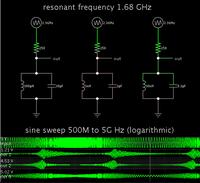LandLack
Member level 3
Hi guys,
do you have some bandpassfilter circuit? The professional ones cost too much, and aren't very "flexible" to my situations. If you have some practical, useful paper thery paper, please, link me.
My situation is this passing Bandwidth need to be around 100MHz, but I don't need it to be tight, perfect, etc. The center frequencies will be between 50 MHz to 2.5GHz.
Thank you in advance for your suggestions,
Best Regards,
LandLack
do you have some bandpassfilter circuit? The professional ones cost too much, and aren't very "flexible" to my situations. If you have some practical, useful paper thery paper, please, link me.
My situation is this passing Bandwidth need to be around 100MHz, but I don't need it to be tight, perfect, etc. The center frequencies will be between 50 MHz to 2.5GHz.
Thank you in advance for your suggestions,
Best Regards,
LandLack
